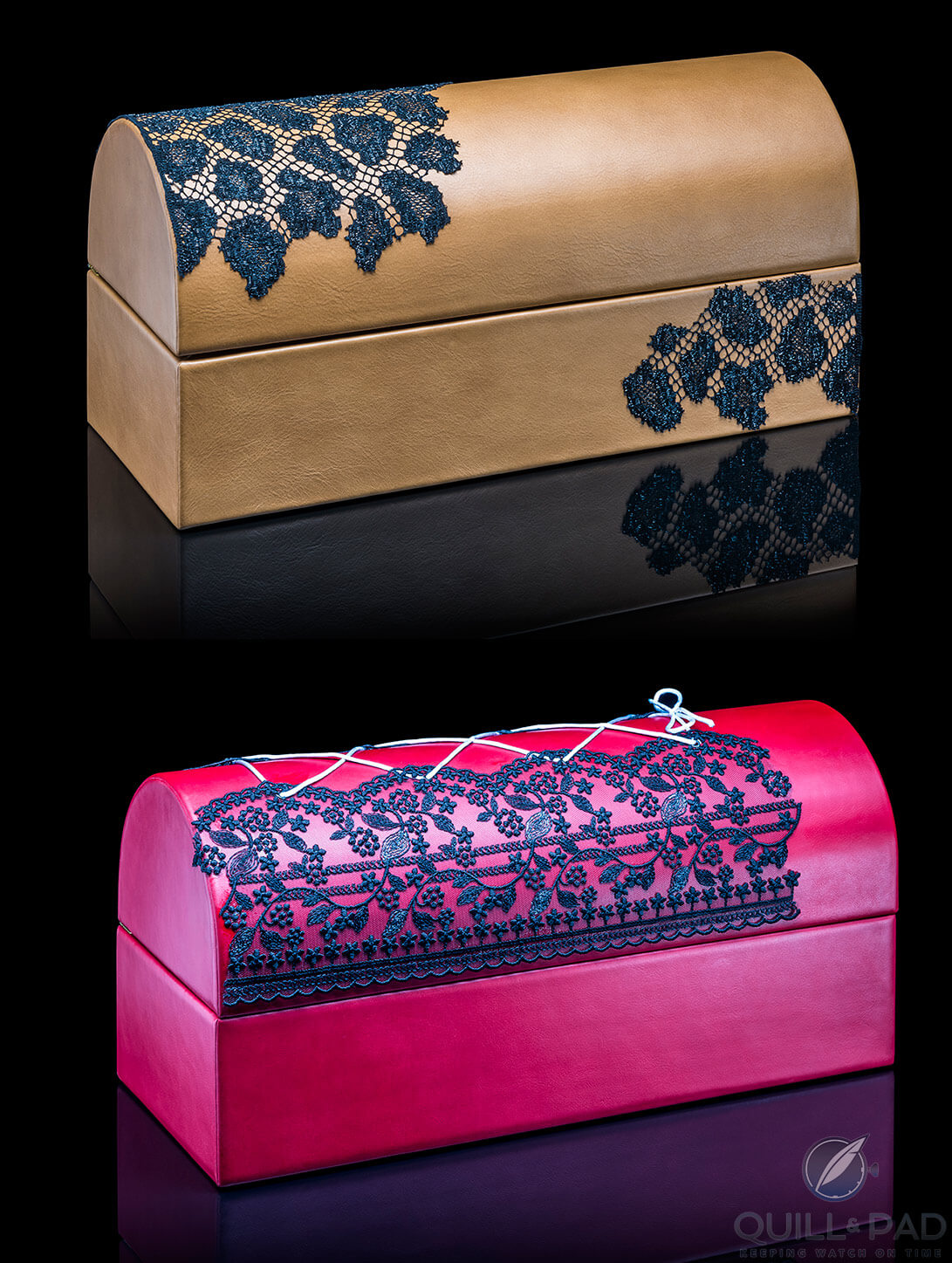by Martin Green
Even in the exclusive world of champagnes, there are tiers. While the birthright, and more importantly the birthplace, of any champagne makes it special, all champagnes are not created equal.
Charles Clavem was inspired by the story of a leather craftsman named Charles from a town called Les Riceys, a hidden gem in the Champagne area.

Charles Clavem champagne (photo courtesy Olivier Frajman)
With a great appreciation for champagne culture and the desire to one day utilize all his knowledge and skills combined with those of others, Charles imagined creating the most exclusive and memorable wine experience, both inside the bottle and out.
Dream on!
While Charles himself never lived to fulfill his dream, others continued in his ways. The result is something that cannot be called champagne, but rather an experience. This starts with the box, whose wooden frame is wrapped in luxurious leather and lined with velvet or suede. These put the boxes of most haute horlogerie creations to shame.

Luxuriously leather-clad cases for Charles Clavem champagne (photo courtesy Olivier Frajman)

Fit for royalty: Charles Clavem champagne (photo courtesy Olivier Frajman)
And then there’s the bottle!
When it comes to champagne, it is usually the name on the bottle that has aficionados licking their lips in anticipation, however you do not need to read the label to recognize Charles Clavem.

Gems and gold foil for a unique bottle of Charles Clavem champagne (photo courtesy Olivier Frajman)
Charles Clavem’s bottles are covered in gold or palladium leaf and the labels are in leather with text and designs hot-stamped in gold or silver.

Applying textured gold foil to a bottle of Charles Clavem champagne (photo courtesy Olivier Frajman)
The made-in-France result is absolutely stunning.
What’s inside a bottle of Charles Clavem?
With such a rich exterior, pressure (no pun intended) builds for the experience within the bottle.
The question is only: is this wine a poser or does it live up to expectations?

Charles Clavem champagne (photo courtesy Olivier Frajman)
There are several things that set Charles Clavem’s cuvée apart from the rest: the firm doesn’t have vineyards of its own, but works with a winemaker based in the heart of Côte des Bar who has a very terroir-focused approach, including organic, biodynamic practices to get the best grapes.

Vineyard in Champagne producing grapes for Charles Clavem (photo courtesy Olivier Frajman)
What also makes the cuvée special is that it incorporates all seven varieties of authorized grapes in Champagne: Chardonnay, Pinot noir, Pinot gris, Pinot blanc, Meunier, white Arbane, and Petit Meslier. Of these grape varieties, the white Arbane, Petit Meslier, Pinot blanc, and Pinot gris are nearly extinct in the Champagne region.
Each grape variety is harvested and separately processed before being blended in 228-liter barrels to age, and interact, with each other for a year. After twelve months, in an unusual practice in the Champagne region, the Solera method is applied, which means that the new blend is added to an oak barrel already containing several years’ worth of blends.
The Solera method allows the younger wines to interact with the older ones to create very complex and refined notes. As the Charles Clavem is an extra-brut cuvée, its dosage – the final step in which a small quantity of sweetness is added – is extremely low at only four grams per liter.

Charles Clavem champagne (photo courtesy Olivier Frajman)
How does Charles Clavem taste?
To truly appreciate Charles Clavem, leave your champagne flutes in the cabinet and take out the white wine glasses: this champagne needs room to breathe. It has that distinct golden straw color that all exceptional champagnes seem to share.
On the nose Charles Clavem is sweeter than you might expect from an extra brut: toasted nuts drenched in honey with a distinct but delicate bouquet.
On the pallet, this champagne is like drinking the rich gardens of France. Pears and apples give it freshness, while walnuts and almonds give it body. And a hint of wood and spice among the fireworks that the tiny bubbles cause in the mouth.
Charles Clavem has more body you might expect from champagne and it lingers in the mouth for a long time.
As it fades away, a feeling of joy and regret gradually emerges as the experience was so memorable that the desire to repeat it is nearly irresistible!

Charles Clavem champagne (photo courtesy Olivier Frajman)
The Charles Clavem Tenebris collection starts at about $750 per bottle, but the actual price of each bottle is different as each is a unique piece created specifically for each client.
For more information, please visit www.champagne-charles-clavem.com.
You might also enjoy:
Pol Roger Cuvée Sir Winston Churchill 2006: From A Long And Complex History
Charles Heidsieck Blanc Des Millenaires 2004: Long Live The King Of Chardonnay Cuvées
Four Pillars Bloody Shiraz Gin: Neon Purple And Guaranteed To Contain No Motorcycle Engine Parts
Leave a Reply
Want to join the discussion?Feel free to contribute!





















































Hmm. “…the firm doesn’t have vineyards of its own, but works with a winemaker based in the heart of Côte des Bar…” – the eonological equivalent of using ETA (I supload).
Buying wine for the experience of displaying the outside bottle and decorated box (as much as for the liquid content), is akin to buying a book to display the dust jacket to all.
Not for me, but a fun read!